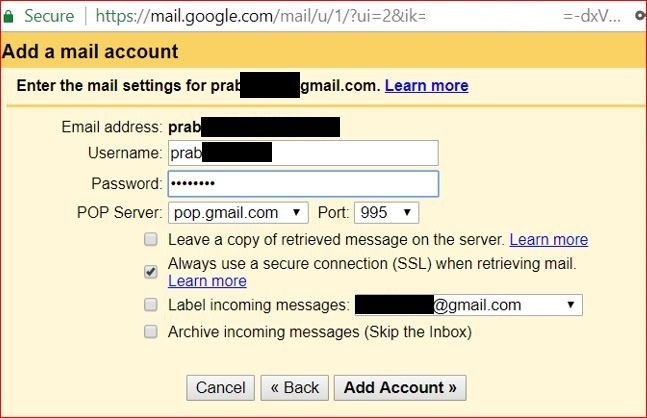Home » Others
Category Archives: Others
Vat Savitri Pooja: Honoring the Sacred Bond of Love and Fidelity
Introduction: India is a land of diverse cultures and traditions, each with its own unique festivities and rituals. One such significant and deeply revered celebration is Vat Savitri Pooja. Observed by married Hindu women, this auspicious day holds immense importance as it symbolizes the devotion, love, and unwavering commitment between a wife and her husband. Let us delve into the vibrant world of Vat Savitri Pooja and explore its customs, legends, and the underlying message of love it conveys.
The Legend of Vat Savitri: The origin of Vat Savitri Pooja can be traced back to an ancient tale from the Mahabharata. Savitri, a devoted and virtuous wife, embarked on a journey to save her husband, Satyavan, from the clutches of death. As Yama, the God of Death, arrived to claim Satyavan’s soul, Savitri pleaded for his release. Impressed by her unwavering love and determination, Yama granted her a boon. Savitri cleverly used this boon to ask for her father-in-law’s eyesight to be restored, ensuring her husband’s family lineage continued.
Customs and Observances: Vat Savitri Pooja is typically observed on the Amavasya (new moon) day in the month of Jyeshtha (May-June) as per the Hindu calendar. The festivities commence with married women waking up early and adorning themselves in traditional attire. They gather around a Banyan tree (Vat Vriksha) or a fig tree, which symbolizes longevity and strength. The tree is beautifully decorated with colorful threads, sacred threads (raksha sutra), and flowers.
The ritual involves circumambulating the tree, tying threads around its trunk, and offering prayers to seek the blessings of Savitri Devi for the well-being and longevity of their husbands. Women fast throughout the day, abstaining from food and water until they complete the puja. It is believed that this rigorous observance will bless their marital life with prosperity, harmony, and protection against any adversities.
Significance and Symbolism: Vat Savitri Pooja is not merely a ritual but a profound expression of love, loyalty, and devotion. It celebrates the sacred bond between husband and wife and serves as a reminder of the power of a woman’s love and determination. The fast and prayers are not meant to seek material gains but to strengthen the emotional and spiritual connection between spouses.
The Vat Vriksha itself holds symbolic significance. Just as its roots, branches, and leaves intertwine and form a strong, nurturing structure, Vat Savitri Pooja highlights the importance of a strong foundation and the need for support, care, and understanding within a marriage.
Conclusion: Vat Savitri Pooja is an integral part of Indian culture that celebrates the cherished bond of marriage. Through its rituals and customs, the festival emphasizes the values of love, loyalty, and commitment. It serves as a reminder to married couples to honor and cherish their relationship, to navigate through life’s challenges together, and to nurture the sacred bond they share.
In a world where relationships are constantly evolving, Vat Savitri Pooja stands as a timeless tradition that beautifully captures the essence of love and fidelity. As we celebrate this auspicious day, let us remember the virtues embodied by Savitri and strive to emulate her unwavering devotion in our own lives, thus reinforcing the importance of love, trust, and commitment within the institution of marriage.
Understanding India’s 3 New Farm Laws

Subscribe to continue reading
Subscribe to get access to the rest of this post and other subscriber-only content.
How to mount oneDrive as Network Drive?
- Open one drive in browser, sign in, and copy the text after cid= field in your url. For reference you have to copy the entries marked.
![]()
- Open your My Computer (or Windows Explorer) and click on Map Network Drive

- Choose a Drive letter, in Folder enter url https://d.docs.live.net/<enter_your_cid_here> in this url replace your cid value at place <enter your cid here>, for example if your cid is 1234567890 then your url will be https://d.docs.live.net/1234567890, then Click on connect using different credentials and provide your onedrive credentials.

- Once drive is created and accessible, then rename it with more meaningful name.

update name in zoom
If you are already signed in to ZOOM app, just click on your user icon, and click on settings.

This will open below settings page, click on below highlighted “view more settings”

This will take you to web page where you can change your first name and last name.
OR
Simply login to https://zoom.us/profile
then click Personal > Profile > Name > Edit

Enter your first name and last name, as soon as you hit save, it will reflect in your zoom client also.

How to receive emails from other email-id’s in GMAIL?
You can get emails from other Email ID’s in our GMAIL inbox. To do this follow below steps :-
1. Click on settings icon on your inbox.

2. choose Accounts and Import Tab, and in Check mail from other accounts section select Add a mail account.

3. Type your email id and click next.
 select
select
4. Select Import emails from my other account (POP3) and click next.
Link of Gmailify

5. Provide POP Server name and Port, you can also provide external POP Server Name of your email service provider.
Links:
- Enter the mail settings for praxxxxxxxxxxgmail.com. Learn more
- Leave a copy of retrieved message in the server. Learn More
- Always use a secure connection (SSL) when retrieving mail. Learn more

6. You can use the mentioned POP and SMTP servers of google. If you are using other google email id’s else please select Other.

7. Below ports are only allowed

Further Readings:
- What is POP and SMTP?
- What are standard ports?
- How to send reply in gmail using other email id?
Various types of Regression in Statistics
In statistics, regression is a technique used to model the relationship between a dependent variable (or target) and one or more independent variables (or predictors). There are several different types of regression models, each suited for different types of data and modeling scenarios. Here are some common types of regression in statistics:
- Linear Regression: Linear regression is one of the simplest and most widely used regression techniques. It models the relationship between the dependent variable and one or more independent variables as a linear equation. The goal is to find the best-fit line that minimizes the sum of squared errors between the predicted and actual values.
- Multiple Regression: Multiple regression extends linear regression to include two or more independent variables. It allows for modeling more complex relationships between the dependent variable and multiple predictors.
- Polynomial Regression: Polynomial regression is a form of linear regression where the relationship between the dependent variable and the predictors is modeled as an nth-degree polynomial. It can capture non-linear relationships in the data.
- Ridge Regression: Ridge regression is a type of regularized linear regression that adds a penalty term to the model to prevent overfitting. It is useful when there is multicollinearity (high correlation) among the independent variables.
- Lasso Regression: Lasso regression is another regularized linear regression that adds a penalty term to the model. It is particularly useful for feature selection as it tends to drive the coefficients of less important variables to zero.
- Logistic Regression: Logistic regression is used for binary classification problems, where the dependent variable has two categories. It models the probability of one of the categories based on the independent variables.
- Poisson Regression: Poisson regression is used when the dependent variable represents count data, such as the number of occurrences of an event in a fixed interval. It models the relationship between the predictors and the count variable.
- Nonlinear Regression: Nonlinear regression is used when the relationship between the dependent variable and the predictors is not linear. It involves fitting a nonlinear function to the data to capture the underlying pattern.
- Time Series Regression: Time series regression is used to model time-dependent data, where the dependent variable changes over time. It accounts for temporal dependencies in the data.
- Quantile Regression: Quantile regression is used to model different quantiles of the dependent variable, allowing for a more flexible analysis of the conditional distribution of the data.
Each type of regression has its own assumptions and applications, and the choice of the appropriate regression model depends on the nature of the data and the research question being addressed.
Understanding Linear Regression – Example 2
Sure! Let’s consider another example of linear regression with a different set of sample data. Suppose we have data on the number of years of work experience (X) and the corresponding salary (Y) for a group of employees. We want to use linear regression to model the relationship between work experience and salary and make predictions for future employees.
Here is the sample data:
| Years of Work Experience (X) | Salary (Y) |
|---|---|
| 2 | 50000 |
| 3 | 60000 |
| 5 | 75000 |
| 7 | 90000 |
| 8 | 95000 |
Step 1: Calculate the Mean
Mean of X (X̄) = (2 + 3 + 5 + 7 + 8) / 5 = 5
Mean of Y (Ȳ) = (50000 + 60000 + 75000 + 90000 + 95000) / 5 = 74000
Step 2: Calculate the Deviations
Deviation of X (X – X̄):
(2 – 5) = -3
(3 – 5) = -2
(5 – 5) = 0
(7 – 5) = 2
(8 – 5) = 3
Deviation of Y (Y – Ȳ):
(50000 – 74000) = -24000
(60000 – 74000) = -14000
(75000 – 74000) = 1000
(90000 – 74000) = 16000
(95000 – 74000) = 21000
Step 3: Calculate the Covariance
Cov(X, Y) = (∑((X – X̄) * (Y – Ȳ))) / (n – 1)
Cov(X, Y) = ((-3 * -24000) + (-2 * -14000) + (0 * 1000) + (2 * 16000) + (3 * 21000)) / (5 – 1)
Cov(X, Y) = (72000 + 28000 + 0 + 32000 + 63000) / 4
Cov(X, Y) = 195000 / 4
Cov(X, Y) = 48750
Step 4: Calculate the Variance of X
Var(X) = (∑((X – X̄)^2)) / (n – 1)
Var(X) = ((-3)^2 + (-2)^2 + (0)^2 + (2)^2 + (3)^2) / (5 – 1)
Var(X) = (9 + 4 + 0 + 4 + 9) / 4
Var(X) = 26 / 4
Var(X) = 6.5
Step 5: Calculate the Regression Coefficients
β1 = Cov(X, Y) / Var(X)
β1 = 48750 / 6.5
β1 = 7500 (approximately)
β0 = Ȳ – (β1 * X̄)
β0 = 74000 – (7500 * 5)
β0 = 74000 – 37500
β0 = 36500 (approximately)
So, the regression equation is: Y = 36500 + 7500X
Step 6: Make Predictions
Using the regression equation, we can make predictions for salaries based on the number of years of work experience. For example, if an employee has 6 years of work experience, the predicted salary would be:
Y = 36500 + 7500 * 6
Y = 36500 + 45000
Y = 81500 (approximately)
So, based on the linear regression model, an employee with 6 years of work experience is predicted to have a salary of approximately 81500.
You must be logged in to post a comment.